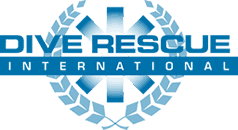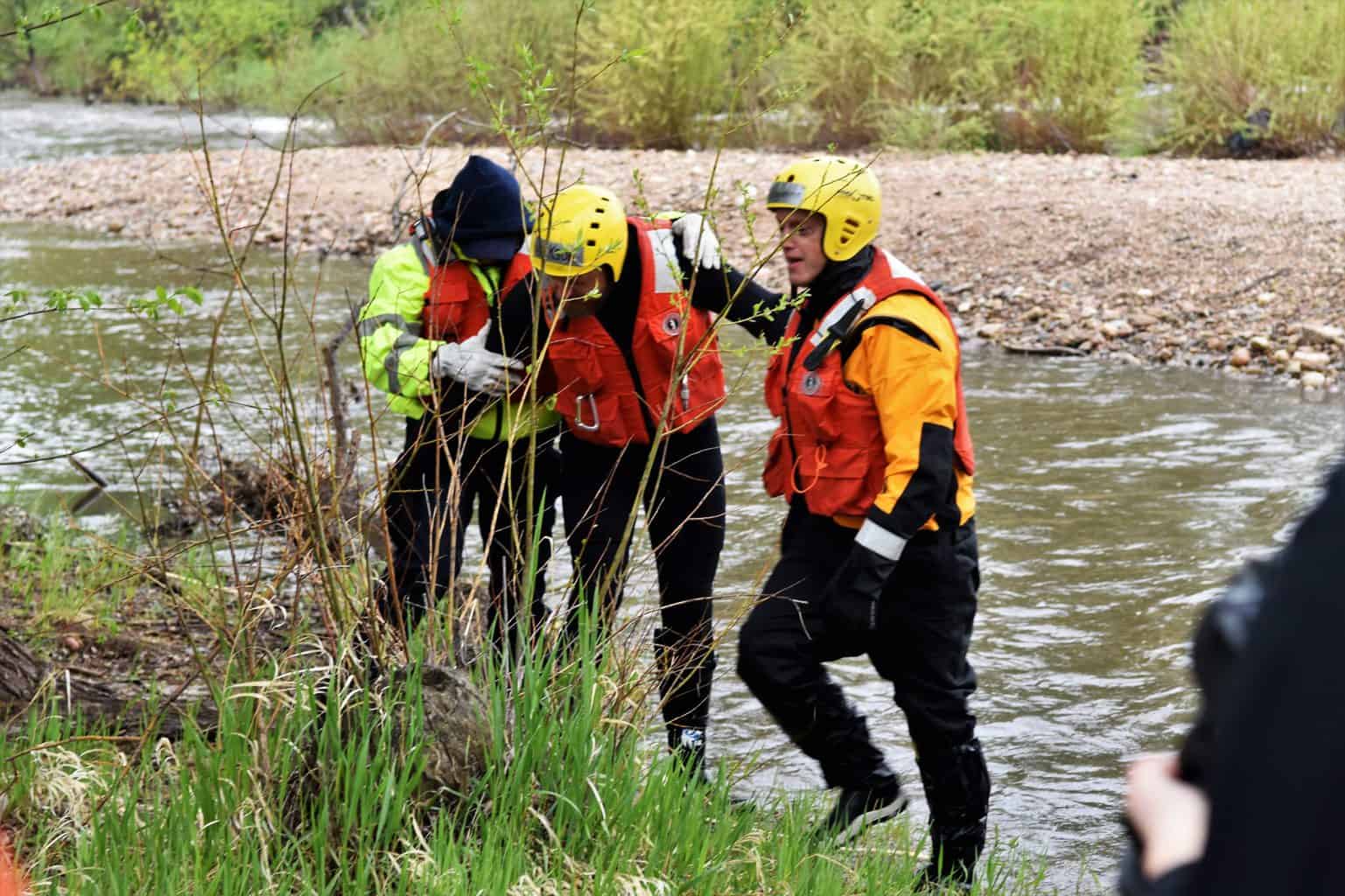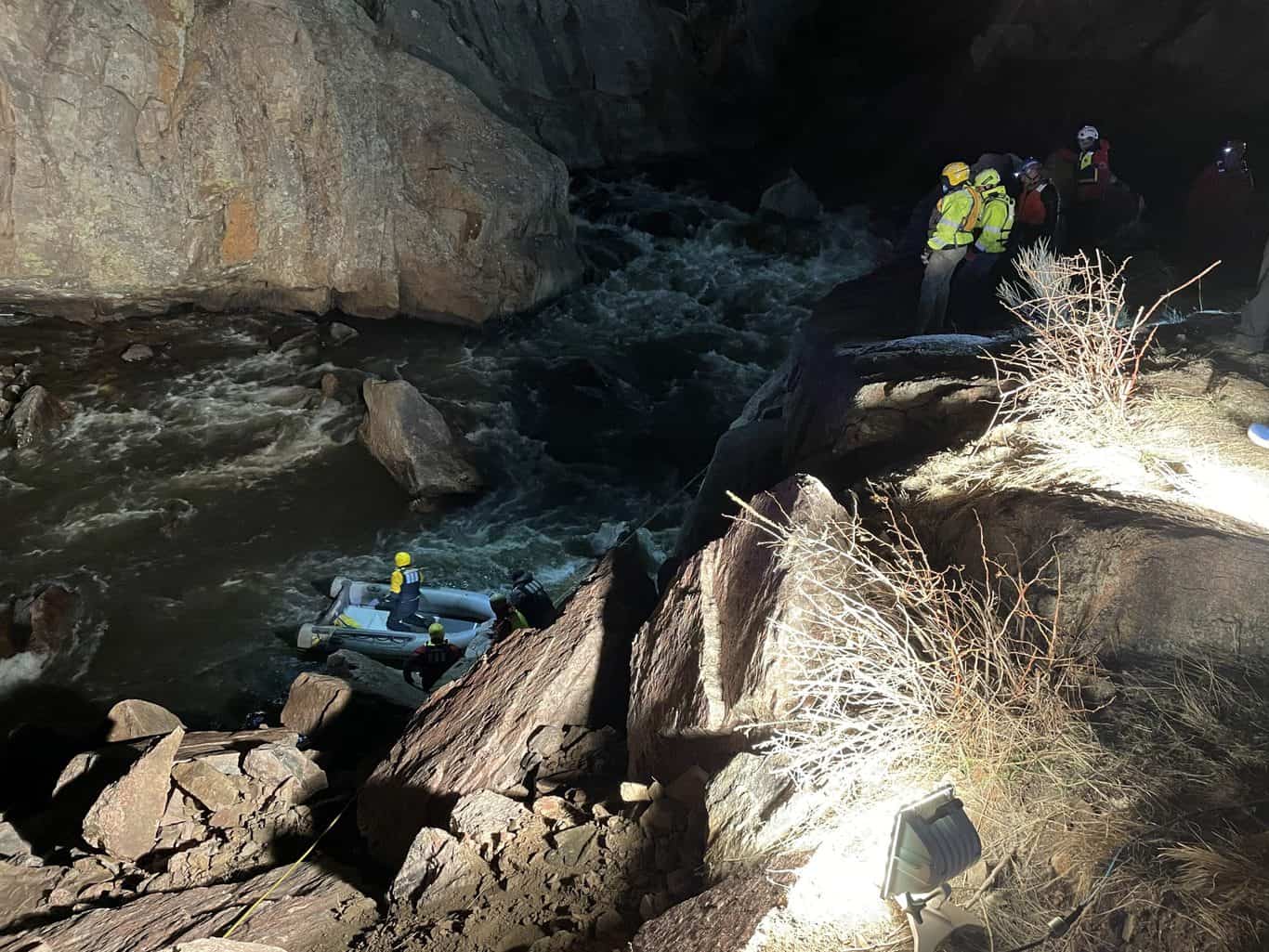Demand was so great for our upcoming Swiftwater Series in Golden, Colorado that we have added another section of Swiftwater Rescue I and Swiftwater Rescue II for the following weeks.
Register now for these great classes!
Swiftwater Rescue I is Dive Rescue International’s renowned three day (24 hour) training program.
Swiftwater rescue operations are inherently dangerous and with the complications of fast current,
low-head dams, and/or hidden debris they can become deadly. Prepare for these special hazards by
learning how to organize and manage safe swiftwater rescue operations. Participants in this program
should be prepared for multiple in-water scenarios.
This program is presented in the classroom and open-water to allow students to become familiar with
different field scenarios. Successful completion of this program is measured in class participation and
an end of program comprehensive test.
Key training topics and the associated objectives include:
SWIFTWATER ORIENTATION
• Identify examples where fast moving water is moving in a linear direction (swiftwater)
• Define the four river references as they relate to facing downstream
• Name the basic characteristics of moving water and what factors can change those
characteristics
• Describe the two types of flow associated with water moving through a river bed and the four
characteristics of water dynamics
• Define surface velocity and its formula
• Describe the five different river characteristics that require caution
• List and define the six categories of swiftwater
HAZARD AWARENESS
• List and give specific examples of swiftwater hazards
• Describe what low-head dams are used for, describe the cross section, and define the challenges
and hazards associated with them
• Preplanning and Equipment
• Identify when preplanning potential accident sites should be done
• List the information that should be included on a Hazard Assessment Form
• Name sources that help with locating hazard and accident sites
• Discuss personal protective equipment (PPE) for both shore-based and in-water rescuers
• Identify what should be included in team equipment
• Define what the SANE approach is
FUNDAMENTAL RESCUE TECHNIQUES
• Describe the proper body positioning for a self-rescue technique
• Identify the four rescue methods, in order of preference, for a victim rescue and explain each one
individually
• List the dynamics of using a throw bag and describe the correct and incorrect ways for a rescuer
to hold the loop of the throwline bag
• Define a shallow water crossing and the three different forms of maneuvers
• Technical Rescue Systems
• List and describe the four technical rescue systems
• Identify and describe the different rescue hand signals
Swiftwater Rescue I
Course Objectives
GENERAL PATIENT CARE
• Describe the medical considerations for general patient care
• Define the field management standards of patient care
• Explain hypothermia and when it can occur
• Define the acronym FAILURE
KNOTS AND RIGGINGS
• Identify the different anchor/riggings systems
• List and describe the different types of knots and in what scenarios they would be used
DAY 1
8:00-12:00 Program Introduction / Overview
Swiftwater Rescue Lecture
Video Swept Away
Final Exam
12:00-1:00 Lunch
1:00-5:00 Rigging Exercises
Knots
Boat Rigging
2-Line
4-Line
Highline
Throwline Bags
Knot Competition
DAY 2
8:00-5:00 Swiftwater Rescue Field Training
River Reading
Self Rescue (Float) w/ Throwbag
Self Rescue (Swim w/ Fins) w/ Throwbag
Shallow Water Crossing
Lunch on the go
Strainer Drill
“GO” Contact Rescue with River Rescue Board
2-Line Boat Operations
4-Line Boat Operations
Highline Boat Operations
DAY 3
8:00-3:00 Swiftwater Rescue Training Scenarios
2-Line Rescue Scenario
4-Line Rescue Scenario
Lunch on the go
High Line Rescue Scenario
Group Swiftwater Rescue Swim
3:00-5:00 Program Review / Critique / Certificates
Swiftwater Rescue I Course Outline
Swiftwater Rescue II is Dive Rescue International’s advanced three day (24 hour) swiftwater training
program. All students are required to have basic swiftwater rescue skills including: excellent swimming
skills, operational experience using high-lines and a working knowledge of knots, rigging and mechanical
advantage systems. All students should be prepared for multiple challenging in-water scenarios.
Specific and detailed information will be provided regarding searching by using coordinated land and
water-based teams.
This program is presented in the classroom and open-water to allow students to become familiar with
different field scenarios and engage in team-building exercises. Successful completion of this program
is measured in class participation and a comprehensive test.
Key training topics and the associated objectives include:
CHARACTERISTICS OF MOVING WATER
Identify examples where fast moving water is moving in a linear direction (swiftwater)
Define the four river references as they relate to facing downstream
Describe the two types of flow associated with water moving through a river bed and the four
characteristics of water dynamics
THE HUMAN BODY IN WATER
Identify the factors effecting the buoyancy and descent of the human body in swiftwater including
current, body type, and clothing
Explain why the “sack of potatoes” myth does not work in tracking a victim’s pathway in swiftwater
Describe the factors that effect the physiology of body re-float
Identify victim considerations in reference to body re-float
Explain why some bodies will not re-float
SAFETY CONSIDERATIONS
Identify swiftwater hazards and their associated risks
Define the Risk/Benefit Analysis of an operation
List the following: personal protective equipment (PPE) for shore-based and in-water rescuers;
swiftwater team equipment; and search equipment
Discuss personal protective equipment for both shore-based and in-water rescuers
SCENE EVALUATION
Identify the factors that are assessed in a scene evaluation as well as other considerations that may
come up as information on the scene becomes available
Describe factors that are used in the process of determining the last-seen point (LSP)
Define reference point and reference object
Explain witness interview procedures and the establishment of a victim profile
Identify sketch components in a scene sketch and explain why documentation is important
ESTABLISHING OPERATIONAL OBJECTIVES
Define a rescue vs. recovery operation
Describe initial search objectives and ongoing search objectives
SEARCH TACTICS
Discuss what circumstances can vary that will change search tactics
Describe the considerations team leaders must make before fielding search teams
Explain perceptions and expectations when searching for a victim
Identify the steps taken to care for a victim’s body once it is located
Describe considerations taken for family and media once a body is found
KNOTS AND RIGGINGS
Identify the different anchor/riggings systems
List and describe the different types of knots and in what scenarios they would be used
Explain the tensioning of high line systems
PREREQUISITES
All students must be a current member of a public safety agency, at least 18 years of age and must show
proof of Swiftwater Rescue 1 certification.
This program is designed for personnel who are physically fit. Participants are encouraged to participate
after successfully completing the IADRS Watermanship Test or testing to a fitness level of 13 MET
(Metabolic Equivalents) or greater. Participants with aerobic fitness questions or concerns should consult
their physician prior to in-water training. Participants who have poor aerobic fitness may attend this program
as surface support personnel with the approval of the instructor.
BE SURE TO BRING
All students should bring: clothing appropriate for weather conditions, adequate footwear, watersports
helmet, and U.S. Coast Guard approved P.F.D. (Type III or V) with whistle and cutting tool, and pen and
paper. In-water participants must provide their own wetsuit or swiftwater dry suit, water rescue gloves, work
gloves and fins.
Swiftwater Rescue II
Course Outline
DAY 1
8:00-9:00 Program Introduction / Overview
Completion of class paperwork
9:00-12:00 Program Presentation
Written Exam
12:00-1:00 Lunch
1:00-2:30 Team Building Exercises
2:30-5:00 Skill Completion and Review
Knots and Throwbag Competition
Rigging
4-Line Boat Rigging
Highline Rigging Techniques
DAY 2
8:00-8:30 Introduction to Objectives
8:30-12:00 Field Exercises
River Reading – Areas of Probability
Skill Verification –
Float, Swim, & Swiftwater Rescue Board Exercises
Contact Rescues
Boat Operations Practice
Lunch on the go
12:00-5:00 Field Exercises
Search / Rescue Exercises
DAY 3
8:00-5:00 Advanced Swiftwater Rescue Scenarios
Advanced Scenarios
Lunch on the go
Advanced Scenarios (continued)
Final Critique
Closing and Certificates



2 Comments on “More Swiftwater Rescue I and II in Golden, CO this June!”
Hi, my name is John Peterson and I’m a Firefighter/EMT with Chelan County Fire District #1 in Wenatchee, WA. I am currently certified in SRT, PADI Rapid Entry Rescue Swimmer and SRT/WRT Instructor. I am looking for a Swiftwater advanced or II class to gain more knowledge and experience. Im curious what your organization has to offer. Thank you for your time.
I’ve sent you an email, John.